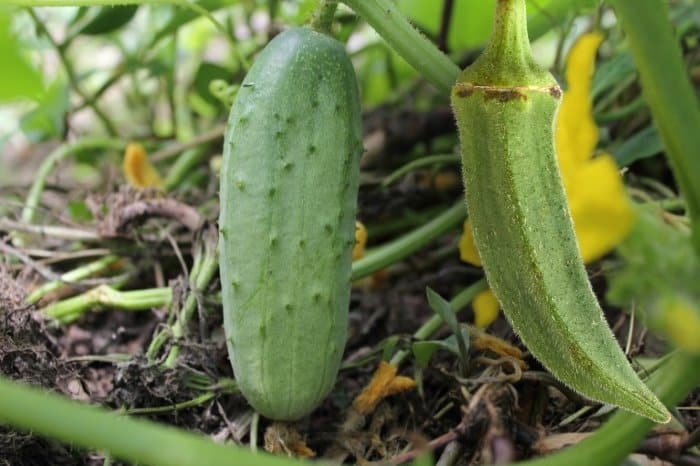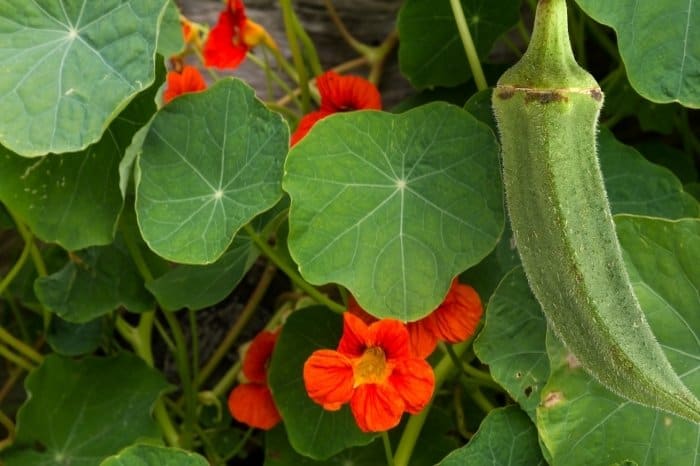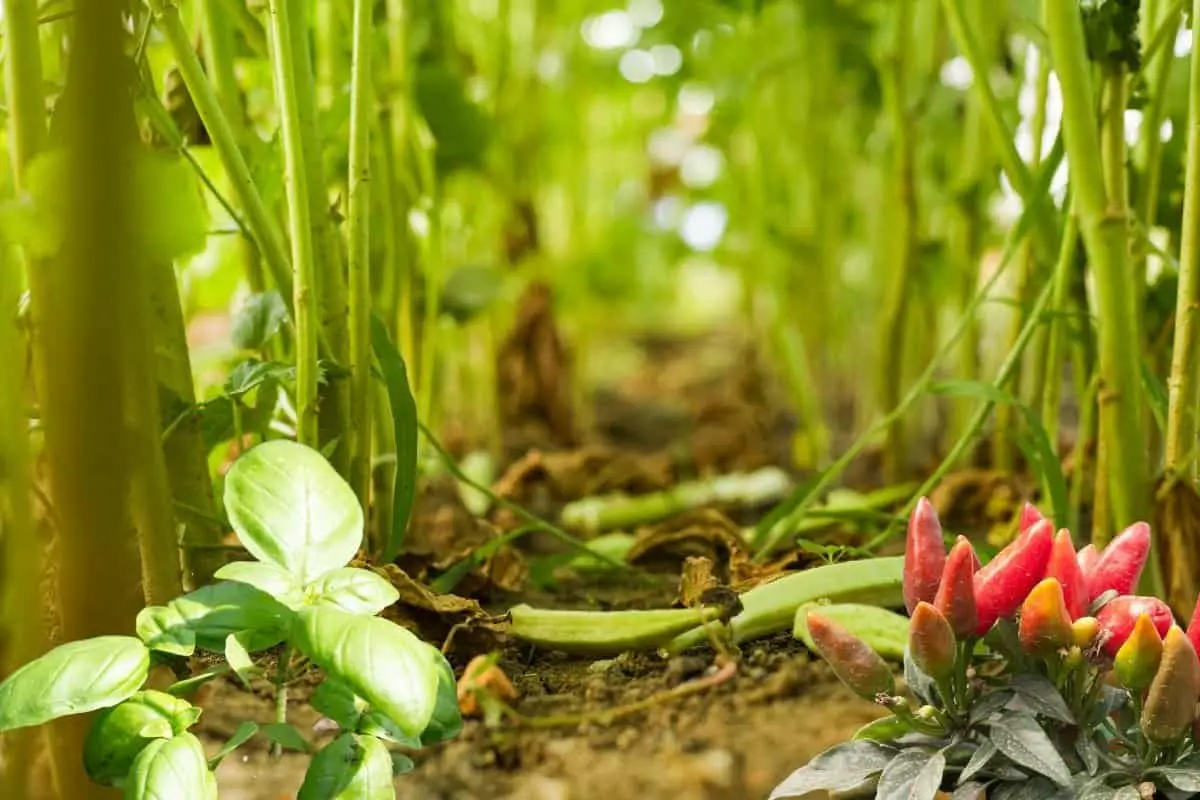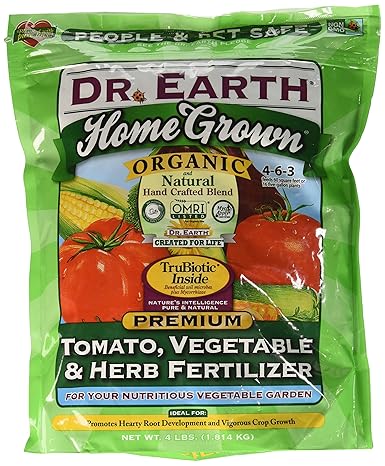Last Updated on March 16, 2023 by Cristina
Okra has a strong love relationship not just with people but also with other plants; actually, companion plants for okra are very many.
Okra (Abelmoschus esculentus) is one of the commonly loved vegetables across the world.
It is somewhat slimy when cooked, but you can overcome this by roasting. It is a crucial ingredient in gumbo, making it a star-powerful ingredient.
Okras have a rich juice used to thicken sauces, much loved by most home chefs. It is a member of the mallow family and has quite showy flowers.
Okra plants will tolerate drought conditions to a certain degree, but not in hot weather. Make sure it gets at least an inch of water every week. Well-drained soil is also important for growing okra.
It is native to Eastern Africa and Southwest Asia. It came in the southern United States with the slave trade. The name okra comes from the Igbo ókùrù; while the Bantu word for okra, ki ngombo, or gombo for short, is the origin of the Creole word gumbo.
Okra is very popular in Africa, India, the Caribbean, the Middle East, and the southern United States.
This hardy, adaptable vegetable can now be found at farmer’s markets across the United States.
Why Companion Planting
Companion planting means pairing plants that thrive together in the same area of the garden.
This companionship allows them to work together to boost growth, deter pests, and increase production for each other. It also allows for beneficial insects and pollination.
Companion planting is an organic method best known to control pests and diseases in your vegetable garden.
This effective method has been practiced for years and has successfully delivered outstanding results. This method helps your garden stay healthier and increase your harvest yield. As a bonus, it prevents blight and other problems that can affect your garden soil.
While there may not be scientific data to back up the claims of success in companion planting, it is reassuring to know that this information comes from gardeners who are practicing it.
This method is central to the folklore and oral tradition of gardening. However, you must know if the plants are compatible before planting them together.
Plants that attract the same pests and diseases are more susceptible, and likely to get sick or damaged. They can interfere with the growth and health of each other by using up all the same nutrients or water in the soil. Proper companion plants can help reduce all the negative side effects of gardening.
Okra Companion Plants
Okra does well with many different herbs, vegetables, and flowers. It needs plenty of water, so you can plant it alongside other thirsty crops like cucumber and eggplants. Other good companion plants to grow alongside okra plants include:
Cucumbers
They love water and rich soil just like okra. These will grow so well side-by-side and benefit each other. Do not plant the two crops too close because cucumbers require plenty of suns to ripen. Planting too close shields them from getting too much sun.

Pepper Plants
These will benefit okra by repelling cabbage worms that can be destructive to okra plants.
Melons
Just like cucumbers, melons also need plenty of sun and water. They are a good companion to okra but be sure not to shade the melons too much. Plant melons on the East side of the okra so they benefit from the morning sun. Alternatively, plant in the West so they benefit from the afternoon sun.
Basil
The strong fragrance of basil sends a good number of pests that attack okra away. This includes flea beetles, spider mites, stinkbugs, whiteflies, and aphids. Okra’s tall plants that can grow up to 6-feet tall also provide a good shade for this tender herb in the summer heat.
Flowering Annuals
These good okra companion plants attract pollinators that will visit your okra flowers too. Late summer bloomers like calendula, zinnias, and cosmos are an excellent choice. Calendula is also great at repelling pests like squash bugs, aphids, Japanese beetles, squash vine borers, and cucumber beetles.
Dr. Earth Organic 5 Tomato, Vegetable & Herb Fertilizer Poly Bag
Aromatic Herbs
Herbs like chives, chamomile, summer savory, wormwood, coriander, dill, tansy, mint, yarrow, thyme, geranium, hyssop, chervil, sage, rue, and oregano are all beneficial companion plants to okra. These herbs repel insect pests like spider mites, cabbage moths and attract beneficial pollinators and insects.
Brassica
Plants like broccoli, kale, cauliflower, Swiss chard, Brussels sprouts, and other brassica family members grow well with okra. They add nutrients to the soil helping improve the health of okra plants.
Sunflowers
These flowers are one of the best companion plants that attract pollinators and allows your okra pods to bloom.
Nasturtiums
These plants attract beneficial insects, like flies, which deters pests like bean beetles and aphids.

Poor Companions For Okra
Most gardeners think that nematodes are beneficial for the garden. However, they forget they are not beneficial to every plant. In the case of okra, nematodes are detrimental because these tiny creatures feed on the young roots of okra plants.
Nematode presence in the soil is increased by growing certain vine crops, like squash or sweet potatoes. Where you have previously grown these vine crops, skip at least a year before planting okra in that soil. All vines except melon and cucumber produce nematodes making them poor for growing okra. Other than these vine crops, okra doesn’t really have any other poor companions.
Conclusion
Okra companion planting goes a long way in ensuring you grow your okra and the other plant organically without having to fight pesticides.
Okra’s sturdy stems allow it to be a windbreaker to tender plants like peppers and some herbs.
It also makes a good companion for lettuces, because its shallow roots won’t compete for nutrients with okra. In return, the okra plants help protect these tender lettuces from the hot sun by providing shade.
Okra does well in hot weather. You may grow it as a shade plant for greens that thrive in partial sun. These include lettuces and kale as well as many herbs including tarragon, parsley, cilantro, and chives.
It’s also a great idea to plant okra with some early cool weather crops like peas. Your peas will be ready before the okra plants get big; this way there is no danger of the okra plants crowding the peas. After the last harvest of the peas, remove their plants to free up space so the okra can get bigger as the weather warms up.
FAQs
What can you not plant next to okra?
You can plant okra in almost any kind of soil and most any type of climate. Okra is one of the most versatile vegetables in the garden, and I have had no problem growing it in every possible environment. There are, however, a few things that you cannot plant near okra.
Some plants will cause your okra to grow very slowly and others will cause your okra to wilt and die.
Here are some of the most common plants that will inhibit your okra’s growth.
Cotton - Cotton is a member of the gourd family. It is one of the most common plants that can inhibit okra growth. The plant has a milky sap that is toxic to okra. It also has many thorns on its leaves and stem.
Tomato – Tomatoes are poisonous to okra, so you must always keep them at least 10 feet away from your okra plants.
Peas – Peas can also be a problem because they are extremely heavy and will sink into the ground if they are not planted properly.
Where can you plant okra?
Okra is a vine, growing up to 10 feet long and looking like a green bean. The pods are about the size of a golf ball. Okra is very easy to grow. It does well in most soil types. It can be planted in either the ground or in containers. You can grow okra in hot weather as well as in cooler weather. Okra needs full sun but it can tolerate partial shade.
Can you plant tomatoes next to okra?
They both like lots of sun, so that should make them work. Okra also likes heat and does not like frost. So it would stand to reason that they would be a good choices for a patio garden.
But the reality is that you may bot want to grow okra and tomatoes together. Okra is a vine and needs a lot of space and sunlight. Okra is a good companion plant for tomatoes, however it can get out of control and shade the tomatoes if planted too close.
Also, okra likes to be kept moist, but tomatoes don't like being watered too much.
What companion can you plant next to okra?
There is a lot of folklore regarding okra's companion plants The main thing to look for is a plant that grows quickly and has lots of pods (okra needs lots of pods) and flowers, like okra does.
Okra is a wonderful companion for most vegetables.
What are the origins of okra?
Okra is a vegetable native to the tropical and subtropical regions of Africa. The fruit, which grows in long pods, was named for the Okra tribe of Nigeria. The plant is commonly used in West African cuisine and its leaves have been eaten as a vegetable since ancient times.
In the U.S., okra is sometimes referred to as gumbo or gumbo okra because it has a similar texture to the Louisiana vegetable gumbo. However, okra is not related to the gombo. Okra is available year-round and is usually sold fresh in markets in the spring.
Caroline is a gardener who loves to get down to the nitty–gritty of gardening. She proudly proclaims herself as a ‘dirt worshipper‘ and can often be found deep in the garden, covered in soil and singing to her plants. As a self–proclaimed ‘plant whisperer‘, Caroline believes that plants need love and attention just like any other living thing, and she loves to give them both. When she‘s not tending to her garden, you can often find her researching the latest gardening trends, or teaching others how to make their gardens thrive



